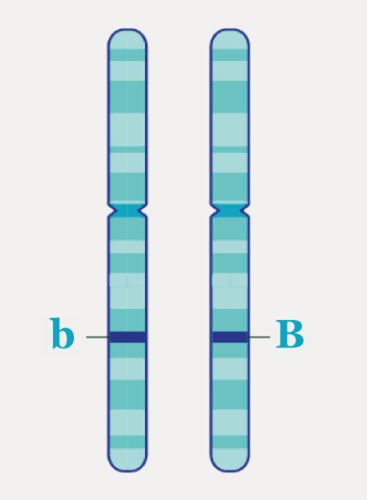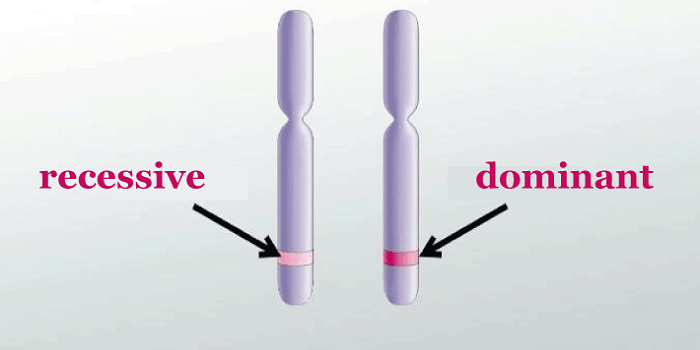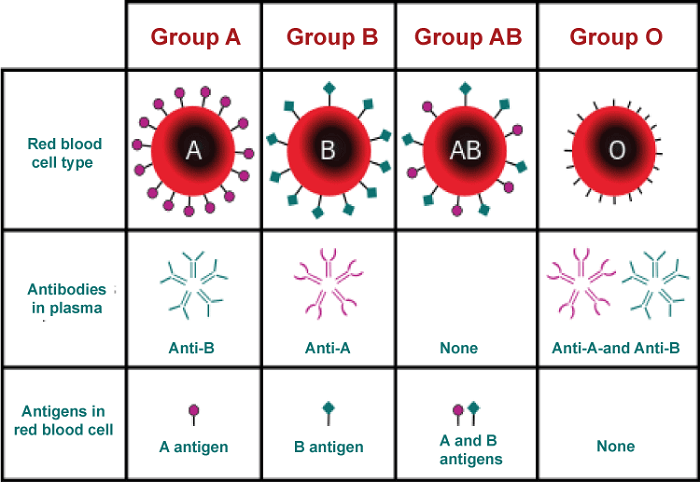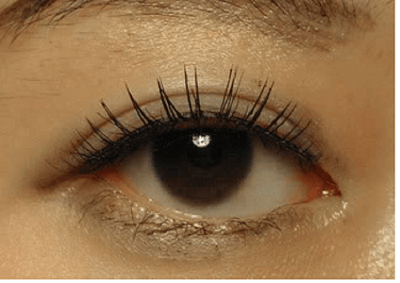Allele DefinitionA variant of the same sequence of nucleotides at the exact location on a long DNA molecule is called an allele (modern derivation from Greek o állos, "other"). This is how it is presented in top textbooks on genetics and evolution. The term "locus" (plural: loci) refers to a gene's chromosomal or genomic location or any other genetic element. In contrast, "allele" refers to different DNA sequences at a locus. SNPs, the most basic types of alleles, although they may also be insertions and deletions with a base-pair range up to several thousand, are also considered alleles. 
Standard definitions of "allele" often only discuss various alleles found inside genes. For instance, the ABO blood grouping is regulated by the ABO gene, which contains six common alleles (variants). According to population genetics, these six alleles alone account for approximately all of the ABO gene's phenotypes in live humans. Most alleles that have been detected have little to no effect on how the gene product they code for functions. Yet, sometimes distinct alleles might produce distinct phenotypic features that can be seen, such as differing colouring. The fact that Gregor Mendel found that pea plants' white and purple blossom hues were the consequence of a single gene with two alleles is a famous illustration of this. At some time throughout their biological life cycle, almost all multicellular creatures are diploid or contain two sets of chromosomes. The chromosomes may be coupled in this situation. The identical genes are present on each pair's chromosomes in the exact location and order over their whole length. If both chromosomes of an organism carry the same allele for a particular gene, the organism as a whole is said to be homozygous for that gene. If the alleles are different, they and the creature are heterozygous for that gene. More than two alleles are involved in determining the majority of characteristics. The allele can exist in several forms, but only two forms will bind to the allocated gene site during meiosis. Moreover, many gene sites are involved in the regulation of various phenotypes. These scenarios increase the total number of alleles involved. The interactions between alleles determine every genetic characteristic. The frequency of phenotypes (and consequently their alleles) changes deterministically within a population due to mutation, interbreeding, and environmental factors. For instance, alleles carried by people with high fitness-who successfully reproduce and convey their genes to their progeny-have a greater propensity to endure in a population than individuals with lower fitness, which are progressively eliminated from the population over time. EtymologyThe term "allele" is a shortened version of the term "allelomorph," which was first used in the early days of genetics to characterize various variants of a gene discovered as diverse phenotypes. This term was developed by British geneticists William Bateson and Edith Rebecca Saunders. It is derived from the Greek prefix o-, allelo-, which means "mutual," "reciprocal," or "each other," and which is linked to the Greek adjective allos (cognate with Latin alius), meaning "other." Alleles that Lead to Dominant or Recessive PhenotypesIn many instances, genotypic interactions between two alleles at a locus may be classified as dominant or recessive depending on which homozygous phenotypes the heterozygote more closely resembles. In cases when the heterozygote cannot be distinguished from one of the homozygotes, the allele expressed is the one that causes the "dominant" phenotype. In contrast, the other allele is referred to as "recessive". Different loci exhibit different levels and patterns of dominance. Gregor Mendel was the one who first properly characterized this kind of interaction. Many features, however, transcend this straightforward classification, and the phenotypes are approximated by codominance and polygenic inheritance. When referring to an allele that is expected to contribute to the typical phenotypic characteristics found in "wild" populations of organisms, such as fruit flies, the phrase "wild type" allele is sometimes used (Drosophila melanogaster). In contrast to "mutant" alleles that result in recessive, infrequent, and usually harmful phenotypes, such "wild type" alleles were formerly thought to lead to a dominant (overpowering - always expressed), standard, and normal phenotype, in contrast to "mutant" alleles that result in recessive, uncommon, and generally adverse phenotypes. At most gene loci, it was formerly believed that most people were homozygous for the "wild type" allele. Any alternative "mutant" allele was thus considered to be found more commonly in heterozygous form in "carriers" for the mutant allele than in the homozygous form in a tiny percentage of "affected" people, typically as hereditary disorders. It is now understood that most gene loci, if not all, are highly polymorphic, have multiple alleles and that the frequencies of these alleles vary from population to population. Additionally, a significant amount of genetic variation is concealed in alleles that do not manifest as distinct phenotypes. 
Multiple AllelesSeveral alleles at each locus are often present among different individuals in a population or species of organisms. The number of alleles (polymorphism) present or the population's fraction of heterozygotes are two ways to measure allelic variation at a locus. A null allele is a gene variation that lacks the gene's typical function because the expressed protein is either inactive or the gene is not expressed. For example, according to traditional genetics, the three alleles IA, IB, and I at the gene locus for the human ABO blood type carbohydrate antigens determine whether blood transfusions are compatible. Every person has one of six genotypes (IAIA, IAi, IBIB, IBi, IAIB, and ii), which may result in one of four phenotypes: "Type A" (created by IAIA homozygous and IAi heterozygous genotypes), "Type B" (produced by IBIB homozygous and IBi heterozygous genotypes), "Type AB" (made by IAIB heterozygous genotypes) and and "Type O" (produced by ii homozygous genotypes). The ABO locus has more than 70 known alleles. It is now recognized that each A, B, and O allele is a class of several alleles with various DNA sequences that create proteins with similar characteristics. Hence, a person with "Type A" blood might be homozygous for one of the "A" alleles, homozygous for both, or heterozygous for both. A person with Type A blood has A-antigens and may have the genotype IAIA or IAi according to the ABO blood group classification. B-antigens are present in Type B blood recipients, who may also have the genotype IBIB or IBi. A person with Type AB blood has the genotype IAIB and exhibits both A- and B-antigens, while a person with Type O blood has the genotype ii and exhibits neither antigen. 
OCA2 and HERC2 are two genes affecting eye colour, an inherited feature. A person's eye colour phenotype is influenced by the interplay of many genes and the variance in these genes ("alleles") across people. Iris pigmentation and the turbid medium's frequency-dependent light scattering inside the stroma of the iris have an impact on eye colour. 
Genotype FrequencyPredicting the frequencies of the matching genotypes from the frequency of alleles in a diploid population (see Hardy-Weinberg principle). Two alleles make create a straightforward model; p + q = 1 p2 + q2 + 2pq = 1 where q is the frequency of the alternative allele and p is the frequency of one allele, which must add up to one. After that, 2pq is the percentage of heterozygotes, q2 is the percentage of homozygous for the alternative allele, and p2 is the percentage of the population homozygous for the first allele. If the first allele is dominant to the second, then p2 + 2pq represents the population's proportion showing the dominant phenotype, while q2 represents the population proportion showing the recessive phenotype. With three alleles: p + q + r = 1 p2 + q2 + r2 + pr + qr + pq = 1 The expression: "number of potential genotypes (G) with a number of alleles (a)" is used when there are numerous alleles at a diploid locus. G = a (a + 1) / 2 Allelic Dominance in Genetic DisorderVarious genetic diseases might result when one person inherits two recessive alleles for a single gene characteristic. Albinism, cystic fibrosis, galactosemia, phenylketonuria (PKU), and Tay-Sachs are recessive genetic diseases. Recessive alleles also cause some diseases, but since the gene locus is on the X chromosome and males only have one copy (i.e., hemizygous), they are more common in men than women. Red-green colour blindness and fragile X syndrome are two examples. When a person gets only one dominant allele, other illnesses like Huntington's disease may develop. EpiallelesTransgenerational epigenetic inheritance refers to how epigenetic markings, such as DNA methylation, may be passed down at particular genomic locations in certain animals. Heritable features are typically examined in terms of genetic alleles. These heritable markings are called epialleles in contrast to ancestral alleles, identified by their nucleotide sequence. Metastable epialleles are a particular form of epiallele that have been found in both mice and humans. They are characterized by the stochastic (probabilistic) creation of an epigenetic state that may be passed down during mitosis. IdiomorphIn 1990, the term "idiomorph" was introduced to replace "allele" to describe sequences at the same locus in different strains with no sequence similarity and most likely do not share a typical phylogenetic relationship. The term comes from the Greek words "morphos" (form) and "idio" (singular, unique). It is primarily used in mycology genetic studies.
Next TopicBiochemistry Definition
|
 For Videos Join Our Youtube Channel: Join Now
For Videos Join Our Youtube Channel: Join Now
Feedback
- Send your Feedback to [email protected]
Help Others, Please Share










